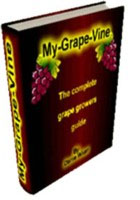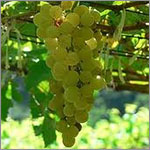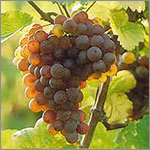Chardonnay |
|
Chardonnay originated in the Burgundy region of France, and is now widely grown in several wine regions around the world. It's a versatile grape whose character reflects its growing region and production process. The variety is an important component in the production of sparkling wines, especially Champagne. Most Chardonnays are full, golden and velvety with hints of fruit, nuts, butter, oak, spice or vanilla and have medium to high acidity. Oak aged Chardonnay remains popular in the United States, however, many wine drinkers have moved away from the big, fat, oaky flavors that this variety is renowned for. |
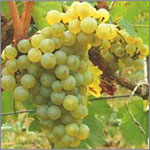 |
Chenin Blanc |
|
Chenin Blanc came from the Loire Valley of France, and has established itself firmly as one of South Africa's favorite white wines - aka Steen. Both sparkling wines and dessert wines can be made using Chenin. It produces wines with a neutral palate, so it's up to the winemakers to stamp their individuality on each vintage, depending on the terroir that the grapes were grown on. The juice is sweet with a higher acidity, therefore capable of producing fuller-bodied, fruity wines. Flavors of quince and apples can be gained from dry wine versions of Chenin Blanc, while richer, honeyed styles can arise from special vintages which have developed noble rot. These very ripe intense grapes can produce luscious, dessert wines, which could well improve with age. |
Chenin Blanc |
Gewütztraminer |
|
This variety is famed for its aromatic, spicy character. Originated in Tramin in Italy, it is grown predominantly in Germany and Alsace, France, Gewurztraminer grows best in cooler climate areas, which ensure a longer and slower ripening period, resulting in intense flavors. With a high natural sugar content combined with refreshing acidity, the wines have a gorgeous flavor of lychees, with aromas of passion fruit and roses. It is often noticed that Gewurtz wines have a slight spritz or fizz - a sign that CO2 bubbles have remained in the wine after the fermentation process. This is an attractive character as it offers the palate that fresh, citrus zing. |
|
Moscato / Muscat |
|
Muscat grapes are widely grown for table use, as well as for wine, with grape colors ranging from pale yellow through to black. The Piedmont’s wineries have helped to make Moscato the success it is, because of Asti Spumante and Moscato d'Asti. It is the fourth most widely planted grape variety in Italy. Almost everywhere it's produced, the wine is nearly always sweet and lower in alcohol with a frizzante (frothy) or spumanti (sparkling) style. There are a few naturale versions made without bubbles, however, the grape is inclined to ferment rapidly making this style quite difficult to produce. With wonderful, fragrances of rose petals and lychees, Moscato's grapey character is easy to recognize. To get the distinctive, crisp and fruity character, fermentations normally occur in stainless steel vats and not in oak. |
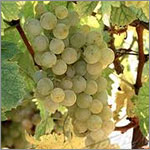 |
Muller Thurgau / Rivaner |
|
A popular variety in Germany, Muller Thurgau is a crossing of Riesling with Madeleine Royale created by Hermann Muller from the Swiss Canton of Thurgau. There are also considerable plantings in Austria, Italy, Australia and England. The style of wine produced is floral and fruity with good acidity levels. These wines can be drunk young. In Germany up until the 1980's, Muller Thurgau provided the backbone of the cheaper, commercial wines Liebfraumilch and Piesporter, which were popular at the time. Riesling is now more widely planted than Muller-Thurgau, although the variety is still significant in Germany and world-wide. |
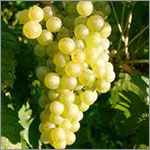 |
Pinot Gris / Pinot Grigio |
|
Pinot Gris is a very old grape variety which spread from Burgundy with Pinot Noir in 1300. Very recently, the variety under its New World name of Pinot Grigio, started to enjoy increasing popularity. It is regarded as one of the noble grapes of Alsace - along with Riesling and Gewurtztraminer - which can be used as late harvest Vendage Tardive wines. In New Zealand, Pinot Grigio is the third most widely planted variety after Sauvignon Blanc and Chardonnay. There are also considerable plantings in California, Italy and Australia. Pinot Grigio is also grown under the following names: Pinot Gris Germany (Ruländer), Alsace, France (Tokay d'Alsace) and Eastern Europe (Tokaji). The wines develop a rich, flinty character, full of mixed fruit flavors due to its high natural sugar levels. The variety ripens early, and If fermented to full dryness, the wines will be high in alcohol. |
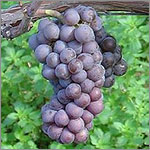 |
Riesling |
|
Riesling is an aromatic grape variety which displays a flowery, almost perfumed aroma, as well as high acidity. It is used to make dry, semi-sweet, sweet and sparkling white wines. Riesling gives wine lovers the best example of the complementary importance between sugar and acid in a wine’s overall balance. A truly great Riesling is exactly that, a stunningly graceful contrast between the two. The floral fruit characteristics combine perfectly with the grape's own natural sugar to acid balance. This wonderful acidity gives Riesling the potential to age for many years, picking up fabulous petrol-like flavors. Riesling is responsible for many of the world’s best dessert wines, as the variety is somewhat prone to Botrytis cinerea (noble rot). In some vintages Riesling makes sweet wines classified as Beerenauslese and Trockenbeerenauslese in Germany, and Vendages Tardives in Alsace. There are also good late harvest wines - a few botrytized - from California and Australia. Eiswein (or Icewine) is harvested from solidly-frozen grapes left on the vine in winter. |
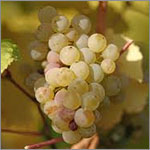 |
Sauvignon Blanc |
|
Sauvignon Blanc originates from the Loire Valley in France, but recently numerous successful wines have been produced in the Marlborough region of New Zealand as well as in California, Australia, Chile and South Africa, and of course, in France. This variety's popularity is at an all time high with the clean and refreshing wine styles being made 'down under'. With a cool climate to ripen the grapes slowly, lovely, delicate grassy and herbal flavors, reminiscent of gooseberries, lime and melon are produced, balanced with a light, crisp acidity. In Bordeaux, it is often blended with Semillon to give a fuller bodied style. The grape is also a component of the well known Sauternes and Barsac dessert wines in France. While in California, Robert Mondavi called Sauvignon Blanc wines "Fumé Blanc" to increase sales - it did! This is a wine that is best drunk whilst young in order to capture the essence of youth and the fresh flavors. |
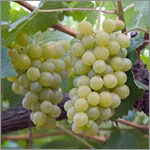 |
Semillon |
|
Château d'Yquem, the world's most expensive wine, uses 80% of Semillon grapes in its blend, to make the dessert wine that it's famous for. Semillon is extremely susceptible to the rot caused by the fungus, Botrytis cinerea. This rot, on many grape varieties in poor climate years is considered to be 'ignoble', and is disastrous - rotting the crop. However, with varieties like Semillon, which have very high sugar levels, this rot is a godsend, and therefore considered to be 'noble'. This is what gives so much character to noble rot wines as the infection causes the grapes to shrivel into raisins, and so capturing all the concentrated sweetness. The grape is widely planted in the Hunter Valley north of Sydney in Australia, and is also gaining popularity in the Barossa Valley and Margaret River regions. In California, it is used primarily to blend with Sauvignon Blanc. Other significant plantings are in New Zealand and Argentina. |
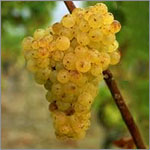 |
Viognier |
|
Viognier almost became an endangered variety only a few years ago, but is now recovering worldwide in both popularity and acreage. California and Australia are two countries which have significant plantings of the grape. Other smaller areas devoted to the variety are Chile and Argentina, and in the United States in Virginia, Colorado, New York, North Carolina, Oregon, Texas and Washington. The wines are known for their Muscat style fruity and floral aromas. Some wines benefit from going through a malolactic fermentation, and gaining some weight and structure while losing a little acidity. Voignier wines should normally be drunk whilst young, as they tend to lose their perfumed character as they age. The wine style is a great accompaniment for Thai cuisine.
|
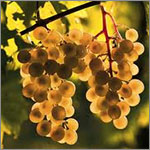 |



